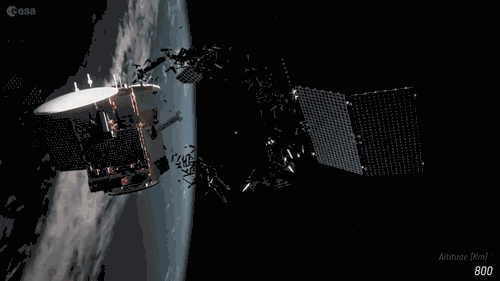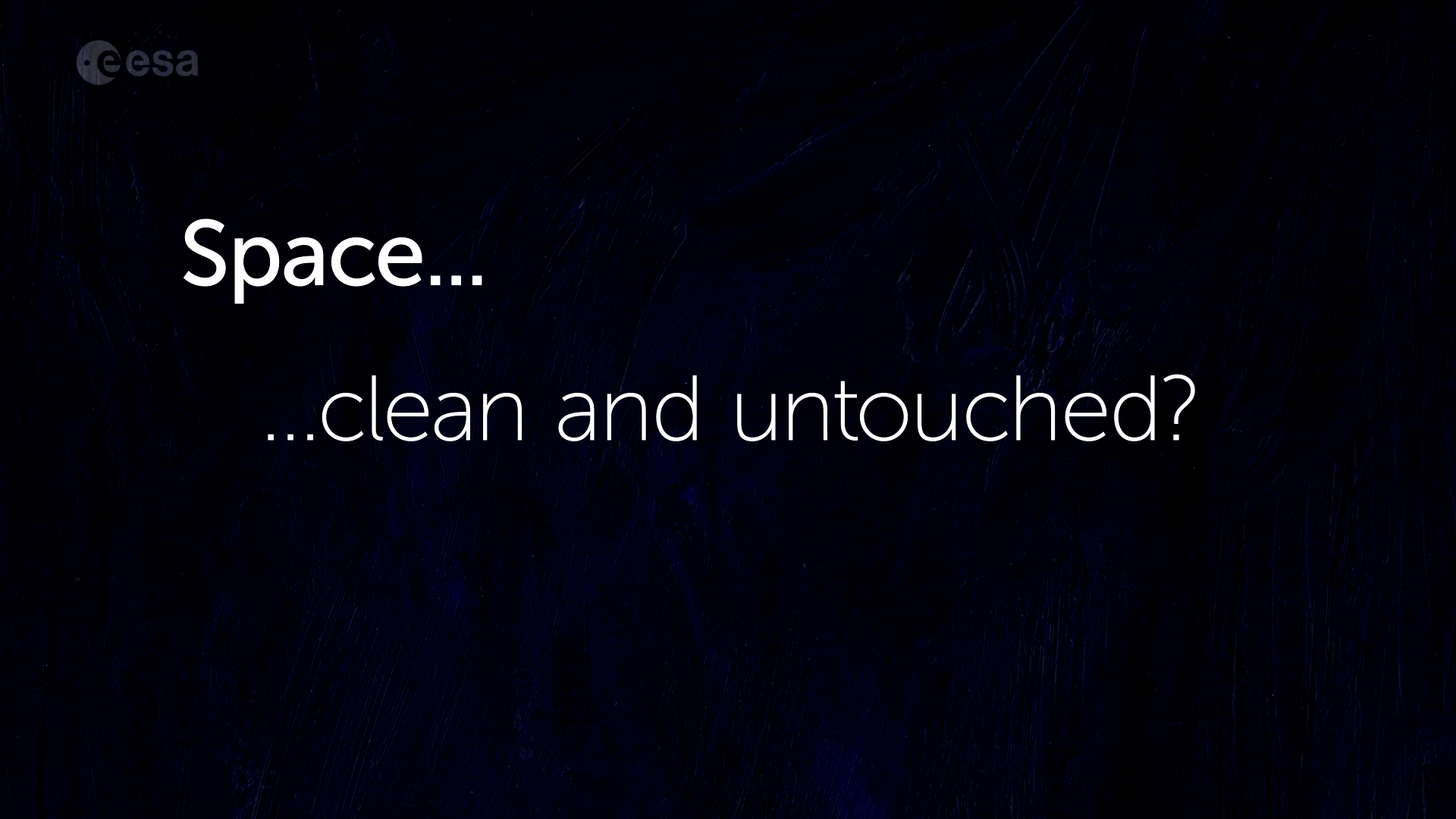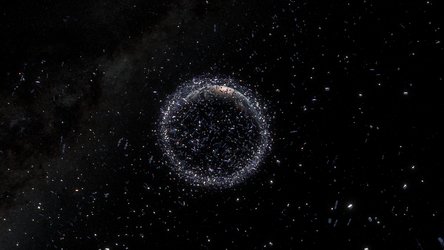Clean and eco-friendly space
As a forward-thinking space agency, ESA is pioneering an eco-friendly approach to space exploration. With the amount of space debris on the rise, and the negative effects of industrial materials, processes and technologies on the environment, it is becoming vital that ESA not only reduces the impact of its own activities, but also sets an example to other agencies.
ESA's Clean Space initiative was set up in 2012 to consider the environmental impact of the entire life cycle of space missions. Clean Space’s activities fall into three main areas:
- EcoDesign: reducing environmental impacts and fostering green technologies
- End of life management: minimising the production of space debris
- In-orbit servicing/active debris removal: removing spacecraft from orbit and demonstrating in-orbit servicing of spacecraft

But achieving eco-friendly space exploration requires innovative technologies to be created. As ESA’s supporters of novel research, the Agency's Discovery & Preparation elements have funded numerous studies that contribute to Clean Space’s three main focus areas.
Understanding and reducing the environmental impact of space missions
To scrutinise the environmental impact of each space project, it is important to assess emissions, resources consumed, and the pressures put on human and environmental health over a mission’s life cycle.
One of the first steps to achieving this was a 2012 Discovery & Preparation study that applied an eco-design methodology to space activities. The methodology investigates the environmental impact of space missions and following this activity, ESA wrote a set of space system life cycle assessment guidelines*. A later study, aptly named GreenSat ([1] and [2]), looked into eco-designing a satellite from beginning to end with a maximum reduction of its environmental impact. This is surprisingly difficult, because sometimes minimising environmental impacts at one stage of the life cycle can lead to larger impacts elsewhere.
Several Discovery & Preparation studies have explored the influence of more specific parts of a space mission on the environment. One study investigated the impact of the launch, an especially emission-heavy part of a space mission, which affects all parts of the atmosphere. Spacecraft propellant can also often be dangerous, both because it is often a harmful chemical and because it can cause explosions in space, creating a lot of debris; another study investigated the benefits of self-pressurised green propellant technology.
These studies are important for understanding how to design missions to be as environmentally friendly as possible, and for ensuring that decision makers consider environmental impacts when deciding whether to proceed with a space project.
Minimising the production of future debris
Scientific models estimate that as of June 2023 there are over one million objects larger than a marble in orbit around Earth, and 130 million objects larger than one millimetre (latest figures).
The vast majority of these objects are no longer operational but can be very dangerous; objects orbit Earth so quickly that something measuring just one centimetre wide can expend the energy of an exploding hand grenade upon impact with a satellite.
In Autumn 2022, a Concurrent Design Facility (CDF) study laid the groundwork for ESA’s Zero Debris Approach – an ambition to totally stop the generation of debris in valuable orbits by 2030. 300 experts from ESA, industry, governmental agencies and academia gathered to contribute to the study; the outcome recommendations included mandatory active debris removal, increased resilience of onboard systems, and enhanced collision avoidance procedures. The development of the relevant technologies and standards to make the Zero Debris Approach a reality has now begun.
But the road to zero debris began long before 2022. A 2018 Discovery & Preparation study simulated satellite collisions to better forecast the future of space debris. Another running at the same time sought to characterise the cloud of debris produced as a result of a collision. And a later study explored how a spacecraft could detect and track pieces of debris in orbit, and then fire a laser at individual pieces to move them out of the spacecraft’s way.

Just like cars drive along designated roads, satellites move along fixed orbits, the most popular of which are geostationary (~36 000 km altitude) and low-Earth (<1000 km altitude) – the latter is the orbits that the Zero Debris Approach seeks to protect. One study modelled the break-up of large satellites and rockets moving along these two space highways to investigate how the overall levels of debris would be affected. It showed that the break-up of large satellites will be the driving factor in the future space environment. Other studies investigated disposal strategies for specific satellites in set orbits, for example satellites in medium-Earth orbit and satellites situated at stable Lagrange points or in highly elliptical orbits.
But one of the more challenging factors in the realm of space debris is mega-constellations consisting of hundreds to thousands of spacecraft, which are becoming a useful and popular solution for global telecommunications coverage. These offer low-latency, high bandwidth global telecommunications coverage, but the resulting growth in satellite numbers might lead to a corresponding growth in space debris. The MEGACO study sought to understand the complexity of mega-constellations, with a focus on collision avoidance and dealing with satellites that have reached the end of their lives.
And there's more. One study looked into space debris risks related specifically to propulsion systems and another even explored how a spacecraft could deorbit itself if it fails and becomes uncontrollable. Studies seeking to understand how de-orbiting a spacecraft would impact the amount of space debris, included predicting the likelihood of survival of different objects that travel through Earth’s atmosphere.
Removing defunct satellites from orbit
Even if all space launches stopped, the amount of debris would continue to rise because of collisions, which lead to more collisions, and so on. But what if there was a way for us to actively remove space debris?
Clean Space is working on exactly this via its Active Debris Removal/In-Orbit Servicing (ADRIOS) project, which aims to establish a new market for in-orbit servicing of spacecraft, as well as debris removal.
The biggest project in the area of active debris removal is ClearSpace-1 – the first space mission to remove an item of debris from orbit. Due to be launched in 2026, ClearSpace-1 will use four robotic arms to capture the Vespa upper stage left in orbit after a flight of ESA’s Vega launcher back in 2013. Discovery & Preparation supported the planning of the ClearSpace-1 mission, which is being led by Swiss start-up, ClearSpace.
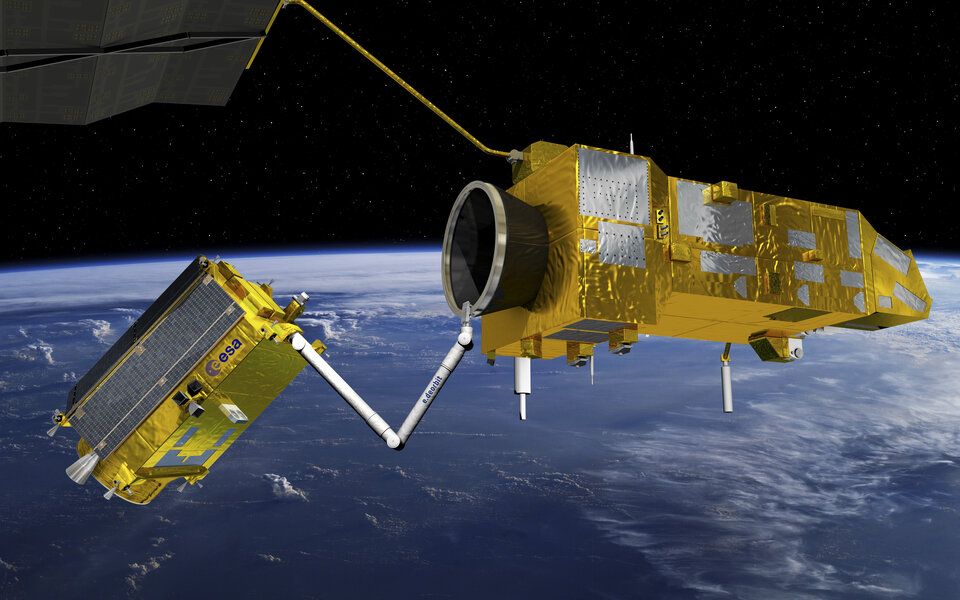
One initiator of the ClearSpace-1 project was a Discovery & Preparation study carried out in 2013 that looked into how a debris-removal mission could be developed. The study found that the success of such a mission would require substantial progress across multiple technology domains, such as capture mechanisms, guidance and navigation, image recognition and onboard processing. So since then, Discovery & Preparation has supported a large number of new studies to make progress in these areas.
A particularly strong focus has been on finding the best way of capturing a large spacecraft, especially using a net or robotic arm.
One study found that including extra satellites with robotic arms within a mega-constellation would be particularly effective at removing a lot of debris. The same study explored the option of launching a chaser satellite with a net to capture failed spacecraft. Another looked into how to reduce the number of failures and how to dispose of satellites once they reach the end of their lives.
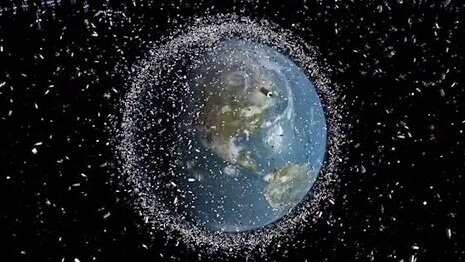
The DETUMBLING study investigated using a robotic arm to deorbit a spacecraft and COBRa researched how a functioning spacecraft could be used to push a derelict satellite into a lower orbit. The functioning spacecraft would fire its thrusters in the direction of the dead satellite, forcing it to change direction and deorbit. Another study assessed the behaviour of elastic tethers that could potentially be used to deorbit satellites.
But to date, there remains no fully functioning method of debris capture and removal. Because technology can be inspired by the principles of biology, which have evolved over billions of years, Discovery & Preparation recently funded the BIOINSPACED study to find bio-inspired solutions for space debris removal. The team behind the study produced a demonstrator with three bio-inspired subsystems: a catapult inspired by the grasshopper’s jumping mechanism, a fold-up drag sail, and a drill inspired by the wood wasp.
Removing space debris is great, but what do we do with it then? One option could be to recycle it in space. In 2021, Discovery & Preparation supported Orbit Recycling to explore the idea of tugging defunct objects to the Moon. There, rovers would collect it, melt it and turn it into the first Moon base.
What’s next?
ESA Preparation recently invited industry partners to outline their vision of Europe’s first in-orbit servicing mission, to be launched as early as 2028. The mission would be able to carry out servicing activities such as refuelling, refurbishment, assembly, manufacturing and recycling. Four companies – Astroscale, ClearSpace, D-Orbit and Telespazio (collaborating with Thales Alenia Space) – were given funding to mature their ideas through ESA Preparation studies. Following these four studies, ESA allocated further funding to implement two of the four envisioned missions.
Next up, ESA will explore how to design satellites to be recycled, as well as extending the lifetime of missions by repairing them in space. This will keep space sustainable and accessible for the future.
* The space system life cycle assessment guidelines are freely distributed. Please email cleanspace@esa.int for access.
Last updated 10 August 2023.


